If you already have an account with Mine Safety Center but you want to buy more training, this guide will walk you through the process of adding a credit card, buying seats, and assigning those seats to users. Contact Mine Safety Center if you have difficulty.
Adding a Credit Card
Login to the training portal. Press My Account button in the upper right corner to open a drop down menu. Select the Payment Information option.
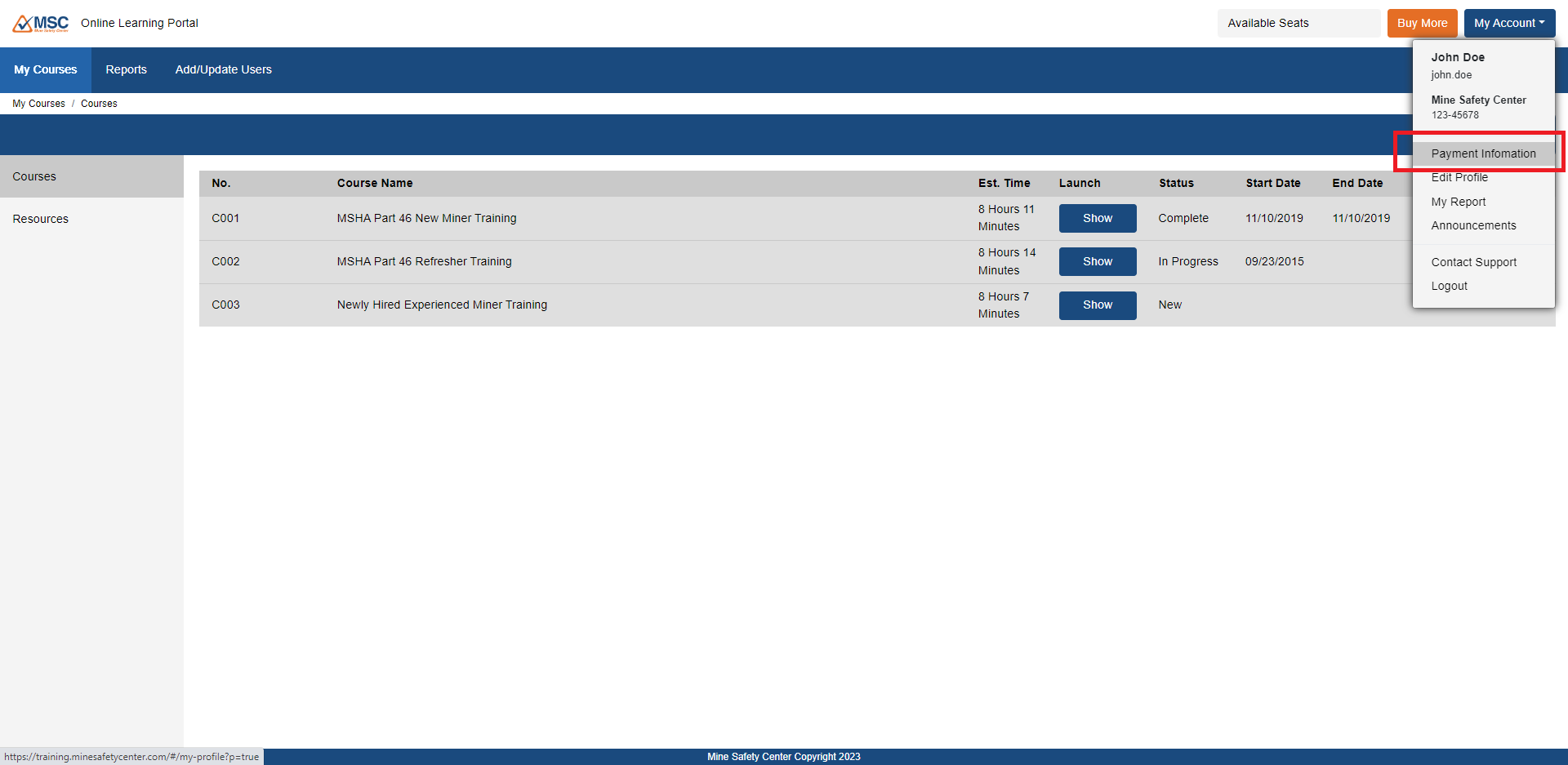
In the Payment Information section on the My Profile page, press the Add Card button on the right side.
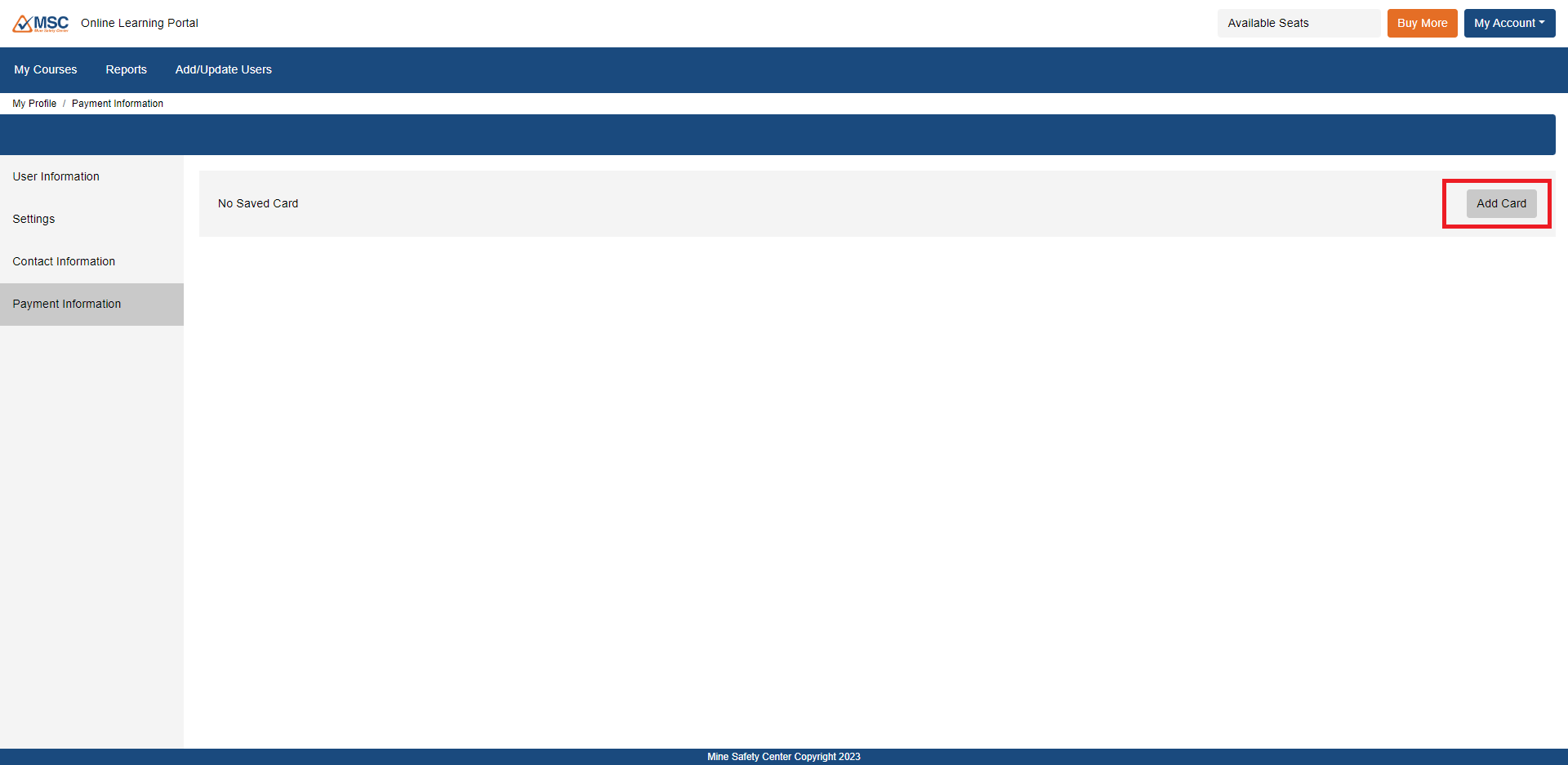
In the form, enter the required credit card information and press save.
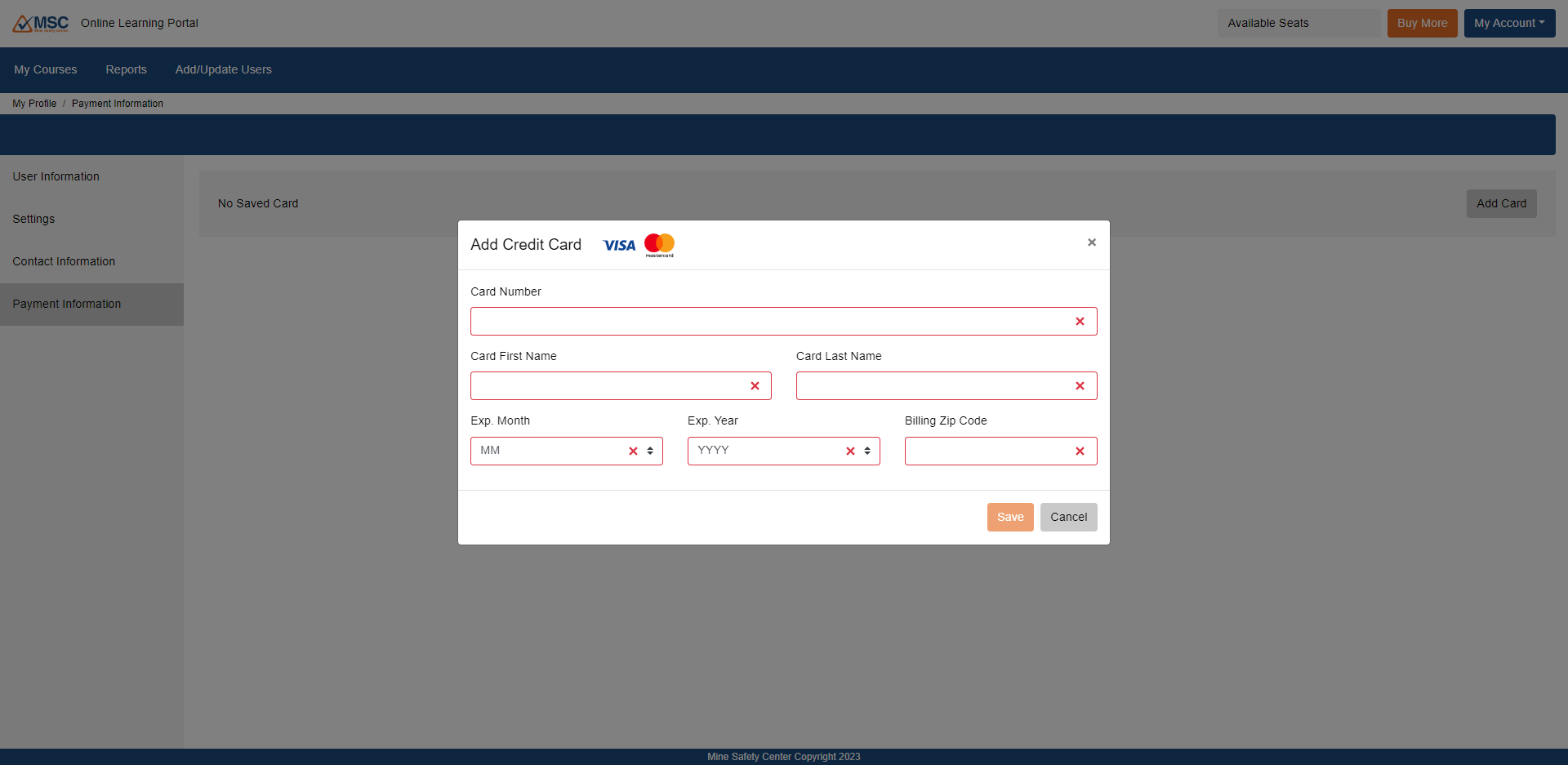
Buying Seats
Press the Buy More button in the upper right corner.
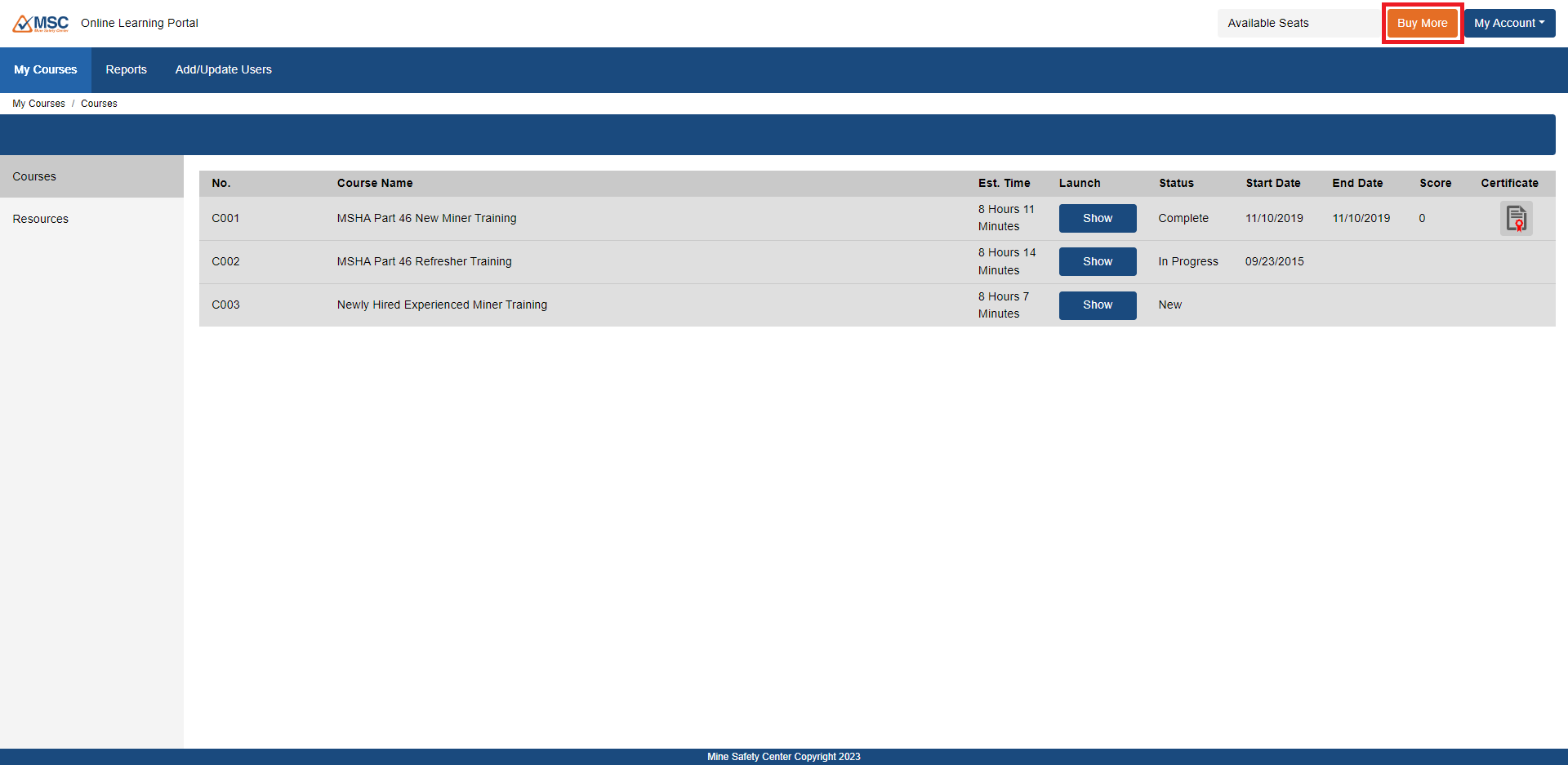
Input the number of seats for each type of training you want to purchase then press the checkout button.
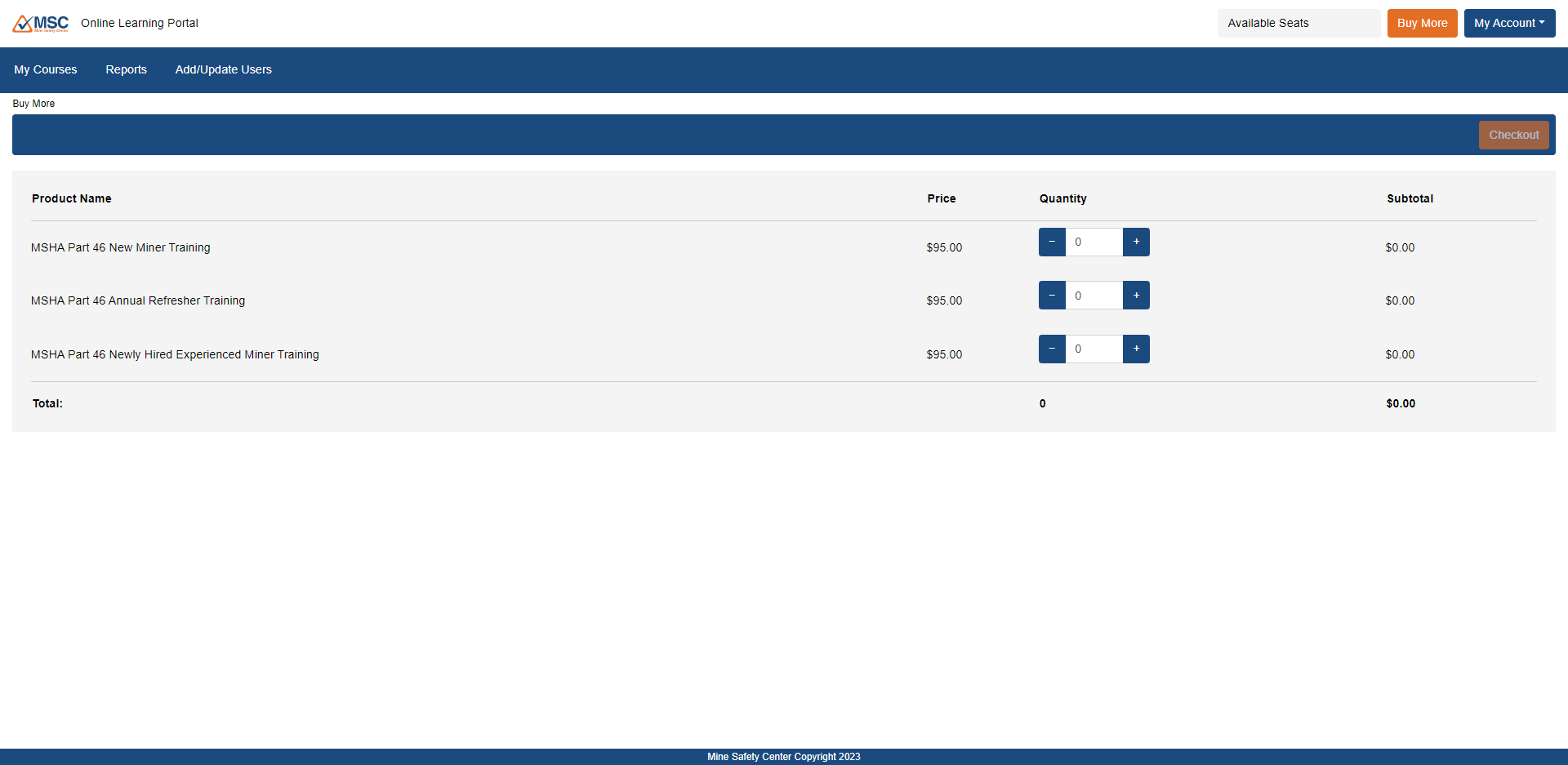
In the pop-up, enter the CVV code for your credit card and press Confirm. An order confirmation screen will display. If you move your mouse over the Availible Seats bar at the top of the page, a detailed count of available seats by product will appear.
Assigning Seats to Users
Navigate to Add / Update Users in the main menu. From here you may create new user profiles or assign seats to existing users.
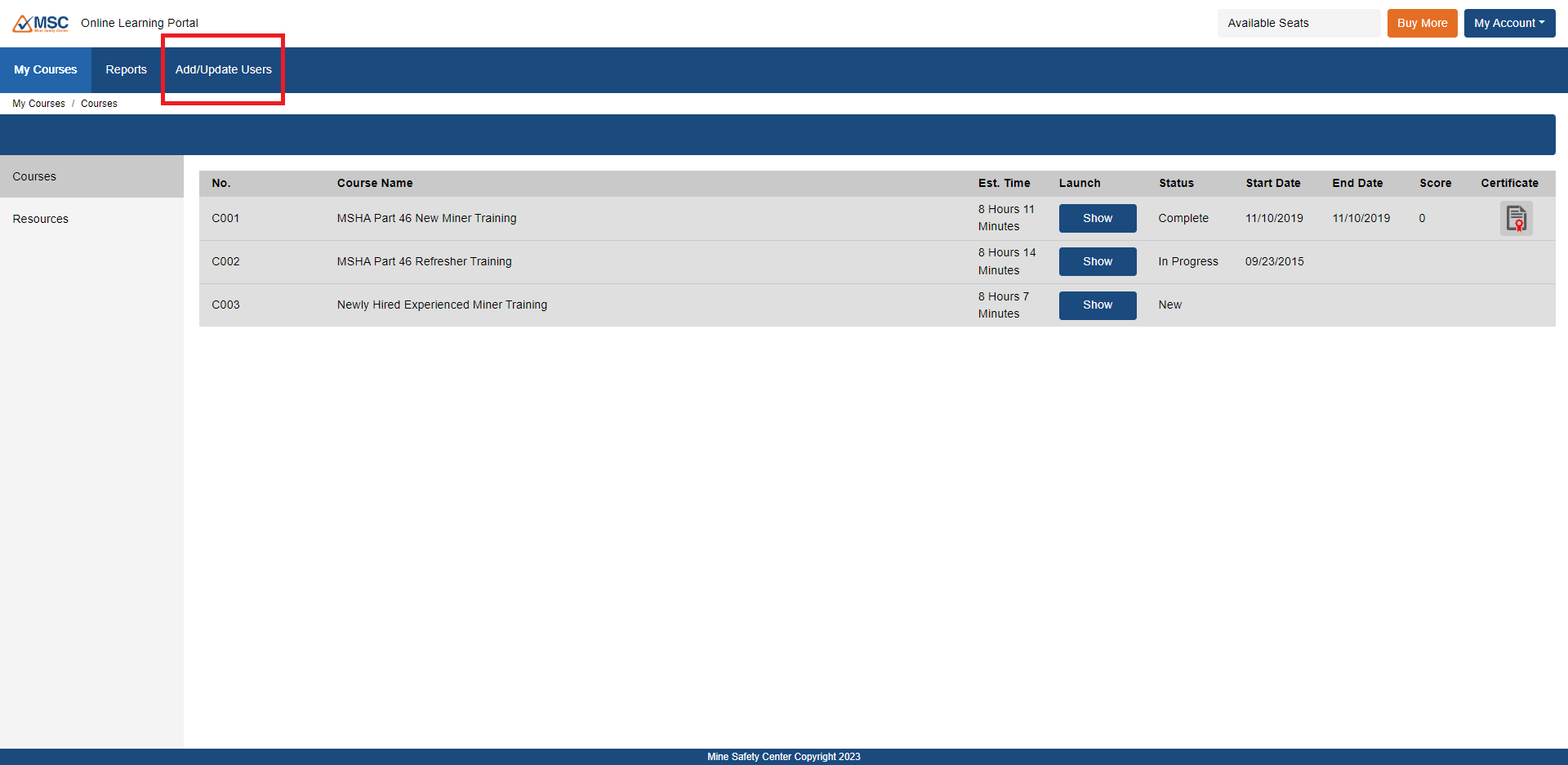
Adding New Users
Press the New User button. On the next screen, enter the following requiring information:
- Username
- First Name
- Middle Name – MSHA regulations require a full first, middle, and last name on training certificates. Failure to include a middle name could result in a fine
- Last Name
- Trainings
- Companies
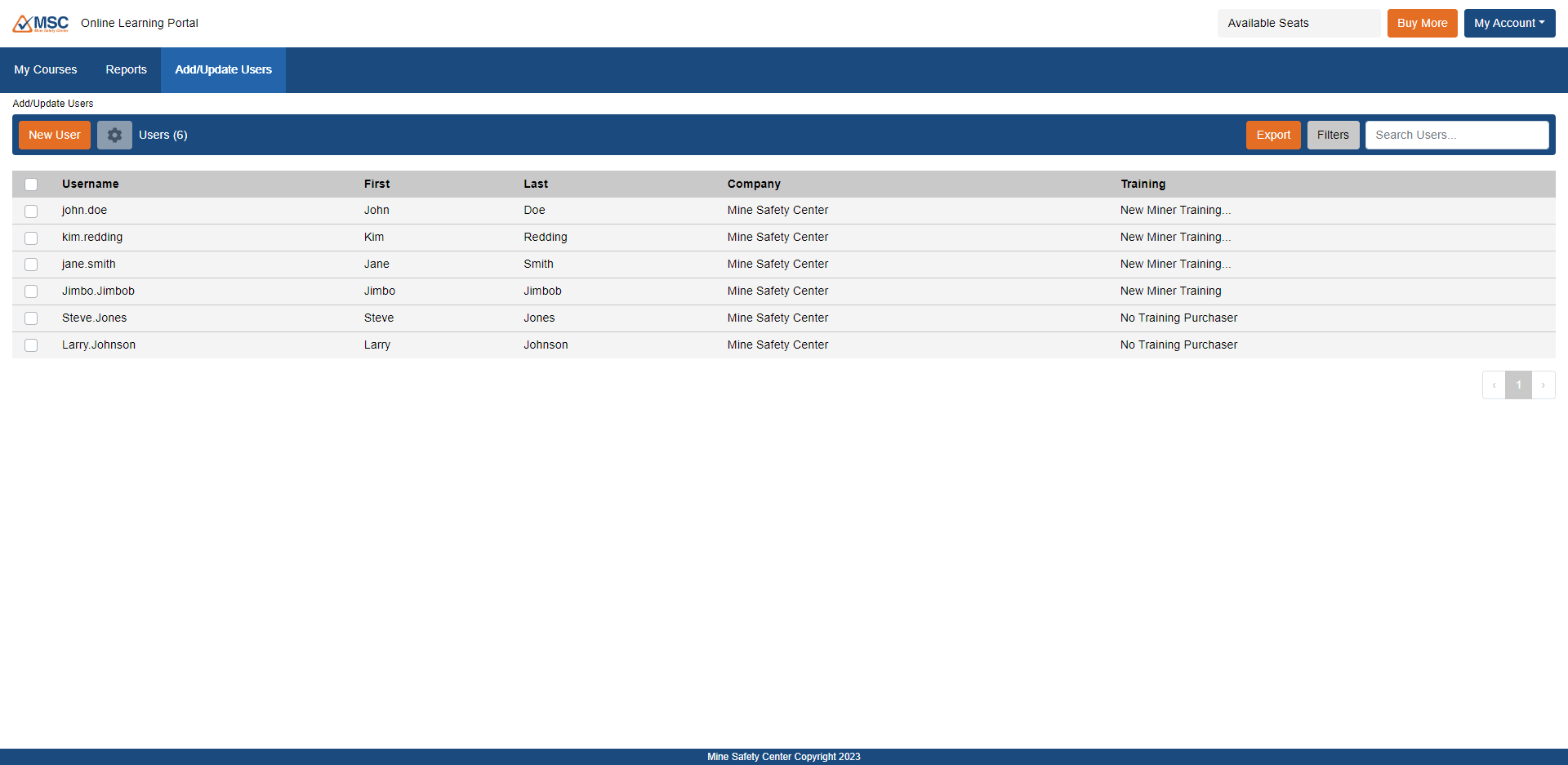
Upon pressing Save, the user will be created and the open seat will be used.
Assign Seats to Existing Users
Locate the desired user in the table and click on their username. You will be taken into their user profile.
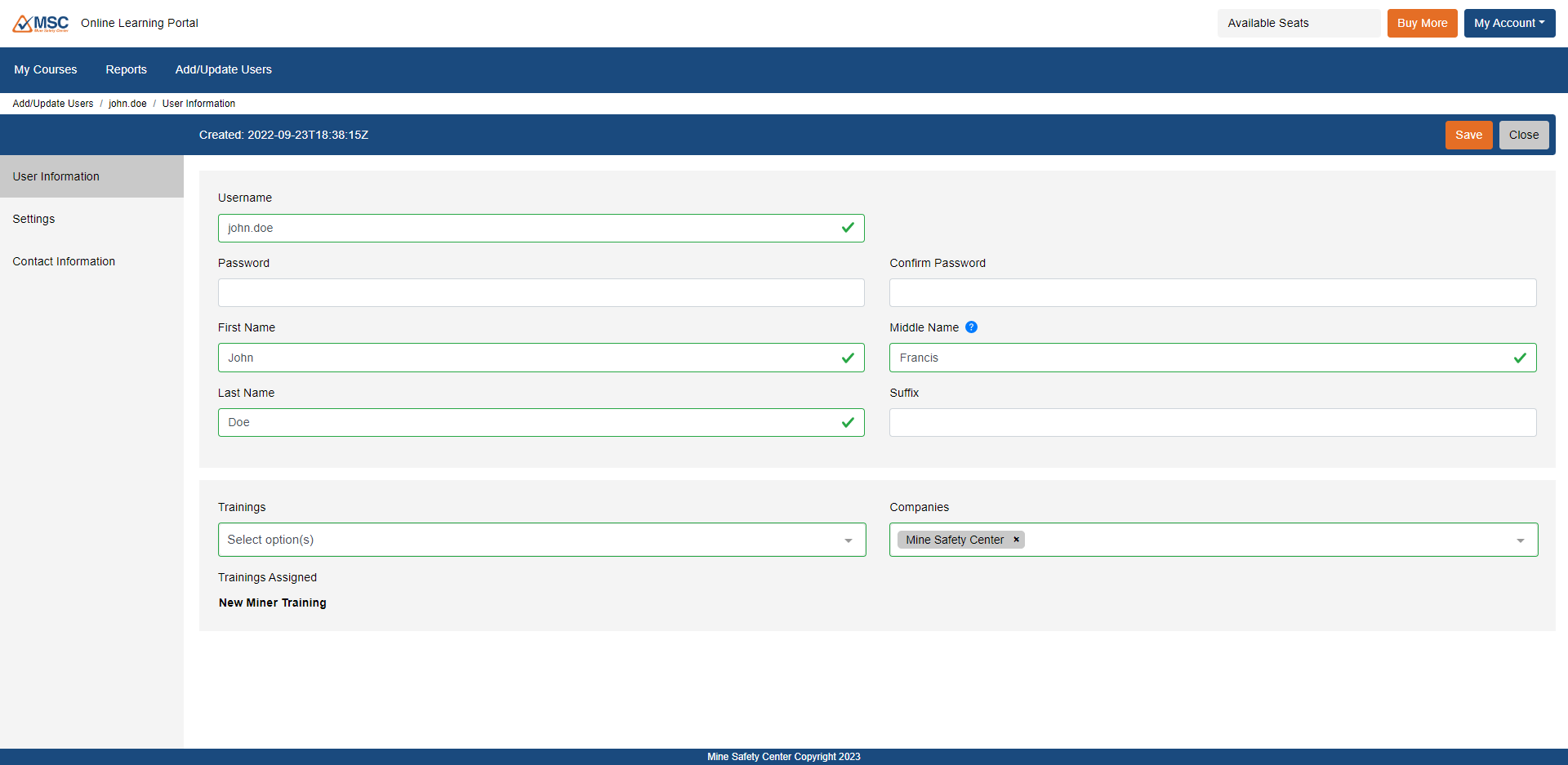
In the Trainings dropdown, choose the training to be assigned to this user. Upon pressing Save, the training will be assigned and the open seat will be used.
Renewing Annual Refresher Training
You may renew Annual Refresher Training for a user under the following conditions:
- The user has completed a previous year’s Annual Refresher Training
- You have one or more un-used seat of Annual Refresher Training
If both conditions are true, a “(Renew)” link will appear beside Annual Refresher Training under Trainings Assigned. Click the link to reset the Annual Refresher Training for the user and to use one open seat.

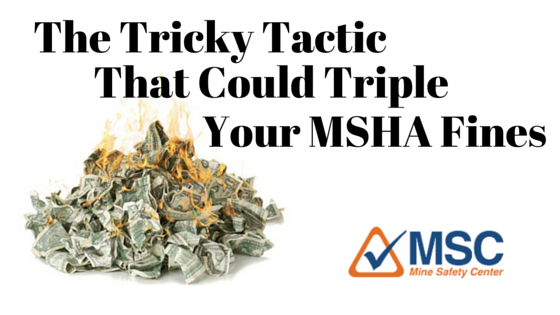
How A Few Words Cost Thousands in MSHA Fines
MSHA inspectors are at your mine for one reason: to find violations and write tickets. Once they find a violation, they must determine how they should mark the violation to assess MSHA fines.
One of the major determining factors for marking MSHA fines as “Negligence” or “High Negligence” is how long management knew about a violation without taking action. When I was an MSHA inspector I would always ask “How long has that existed?” when writing a ticket. Many times inspectors will suggest how long a violation existed. Something like, “It looks like that’s been broken for a few years, don’t you think?”
This is where you can really step in it.
Some managers agree thinking it will get the inspector off the property faster. Instead, they may have tripled the MSHA fine up to $242,000.
How? You probably already know. The manager confirmed a time frame.
If you don’t know how long a violation has existed that should be your answer, “I don’t know.” Nothing more.
I’ve seen 3 words cost a mine operator $7,000. Here’s How:
To fill fuel the tank at this mine, a person must climb a ladder with a fuel hose. Recently, an inspector came to the site and pointed out that the person climbing the ladder can’t keep 3 points of contact because they need one hand to hold the fuel hose.
While the inspector is right and the tank should be (and was) corrected, this fuel tank has been repeatedly inspected for literally decades with no warnings, no MSHA citations, and no MSHA fines.
The inspector then asked my client, “How long has this tank been like that?” This leading question prompted the 3 words that cost my client $7,000.
“Heck, 25 years.”

By agreeing to a time frame, he acknowledged that he knew a violation existed and did nothing to fix it – even if he didn’t know it was a violation. And that is how a violation escalates from low or moderate negligence to high negligence or reckless disregard.
(Oh, and since you’re in management, making this mistake can also expose you to personal MSHA fines – going after YOUR bank account – as high as $242,000. But that’s another post.)
What he should have said was…
“That was a violation? I didn’t know. No one has ever said that was a violation before.” Don’t accept the premise of his leading question.
You can even lose money when the inspector is wrong
That’s right. You can lose money if an inspector incorrectly cites a condition as a violation.
I’ll give you an example from a client in the northwest.
At this particular mine there is roadway on top of a hill with a slope on either side. A little while ago a new inspector was at this mine and decided this roadway needed berms and the mine was in violation. The inspector asked how long the road had been like this. The owner’s response?
“About 30 years.”

That’s a major MSHA fine. It’s also incorrect.
The MSHA regulation for berms states:
30 cfr 56.9300(a) – Berms or guardrails shall be provided and maintained on the banks of roadways where a drop-off exists of sufficient grade or depth to cause a vehicle to overturn or endanger persons in equipment.
This roadway was compliant with MSHA regulations. Unfortunately, my client accepted the premise of this inspector’s question. Even though it wasn’t a violation the mine operator received a $23,000 ticket.
Yes, the operator can fight the ticket and win. But legal fees will cost almost as much as the ticket and take a significant investment of his time. Going to court also comes with a big risk. Depending on the judge, he could lose his case which would cause him to pay the ticket AND his attorney.

Prevent MSHA Fines By Spotting Incorrect MSHA Citations Before They’re Filed
He should have argued the ticket on the spot with something like, “What’s the problem? You guys have inspected my site for years and that’s never been an issue. Why didn’t all the other inspectors think this was a violation?”
If after this conversation the inspector still believes it’s a violation, the operator should have been issued a warning with the chance to re-mediate.
But because he slipped up, this operator paid the fine plus the cost of fixing the berm (which also caused weeks of downtime).
The simple question of “how long has that existed?” opens a nasty can of worms.
If someone at your site falls into this trap you’ll be getting a visit from a Special Investigator.
How is a Special Investigator different than an MSHA Inspector and what should you do if one is on your site? That’s a topic for another day.


